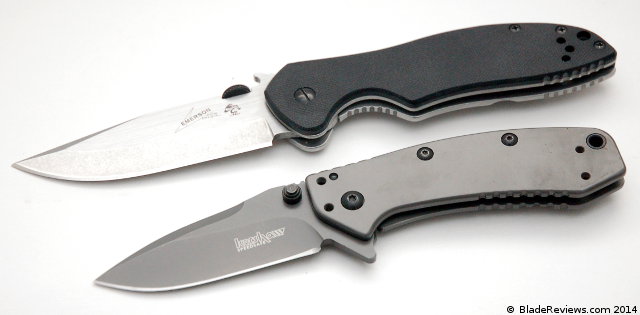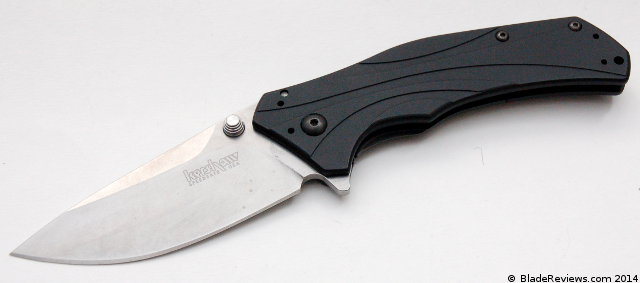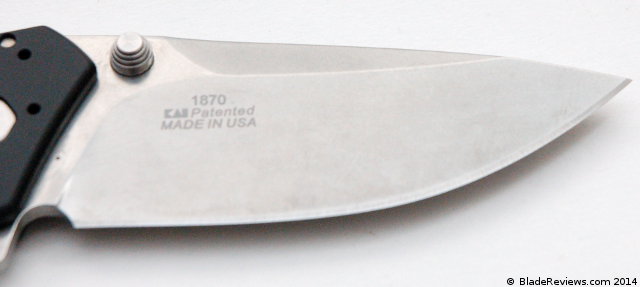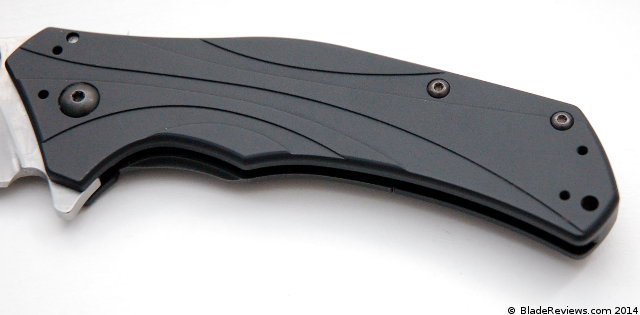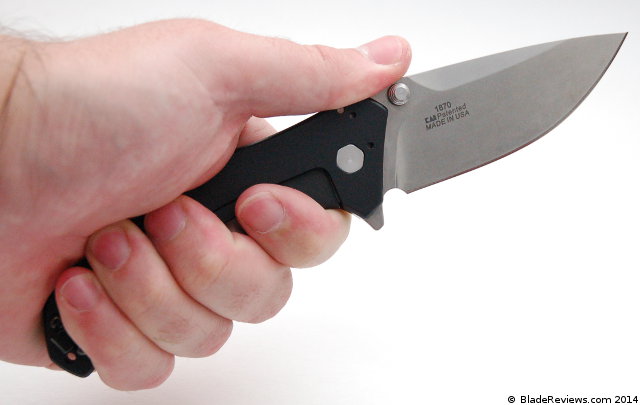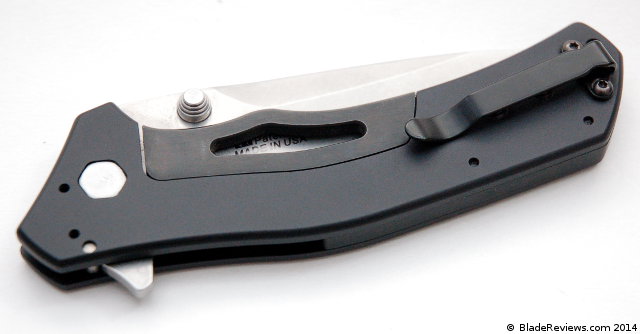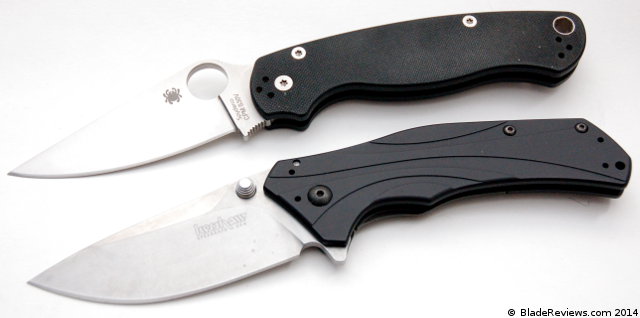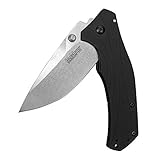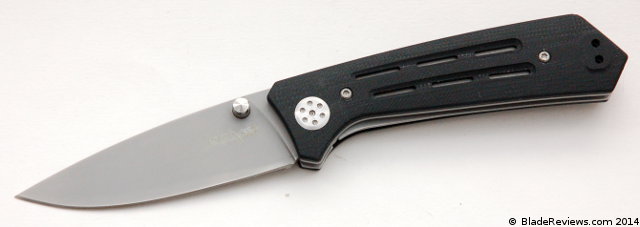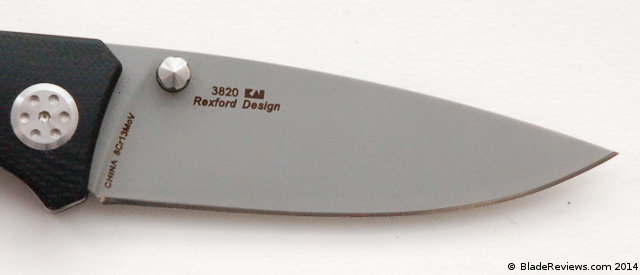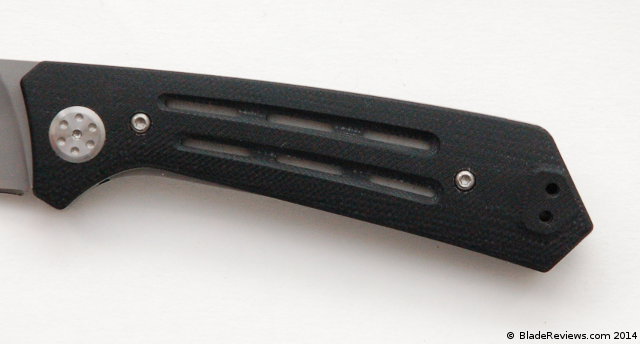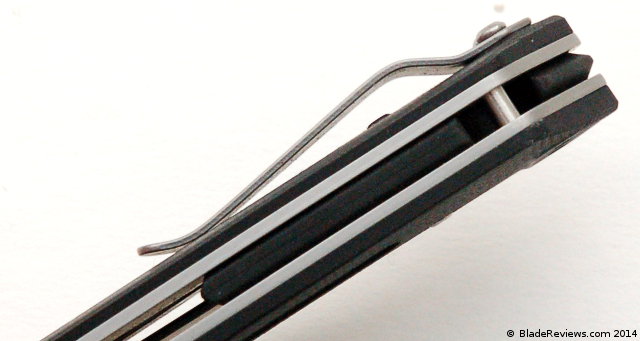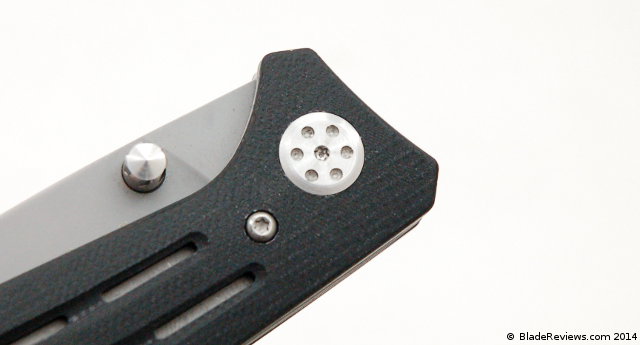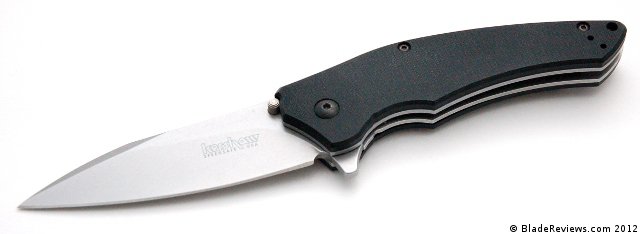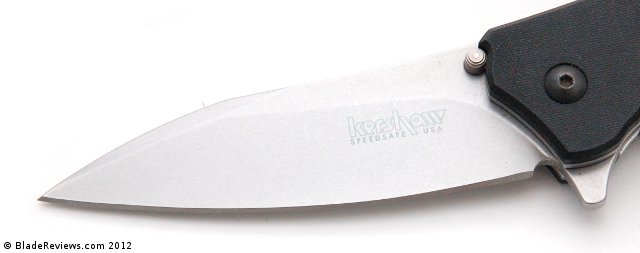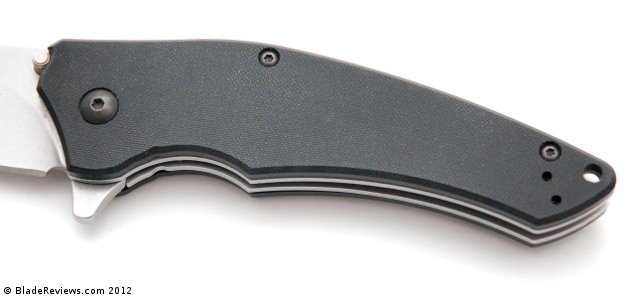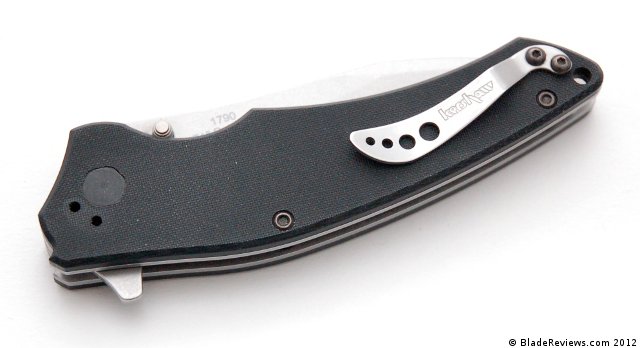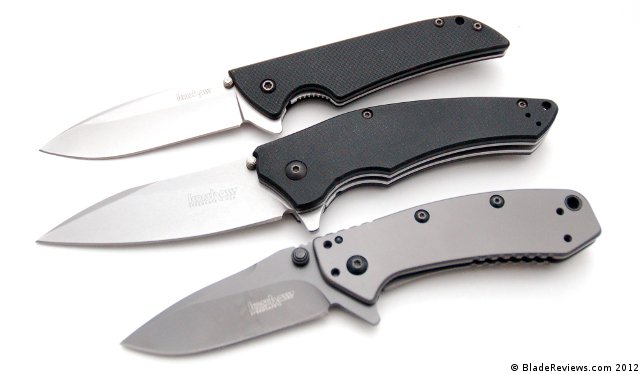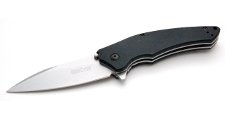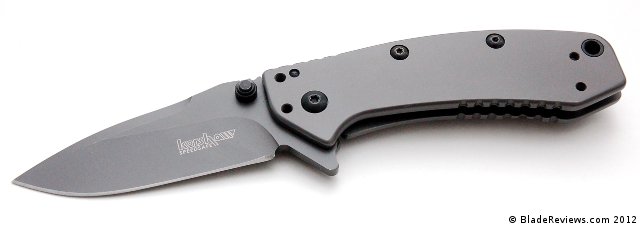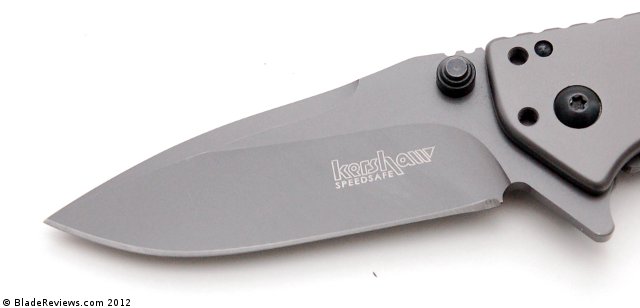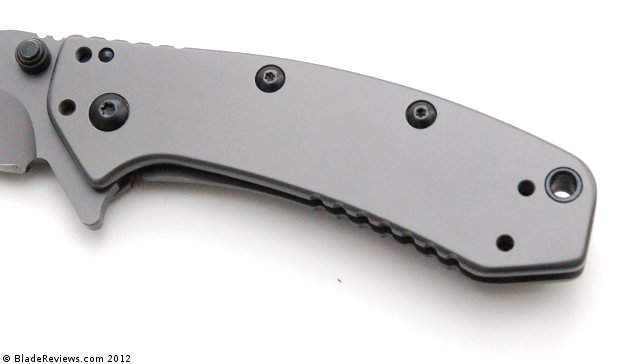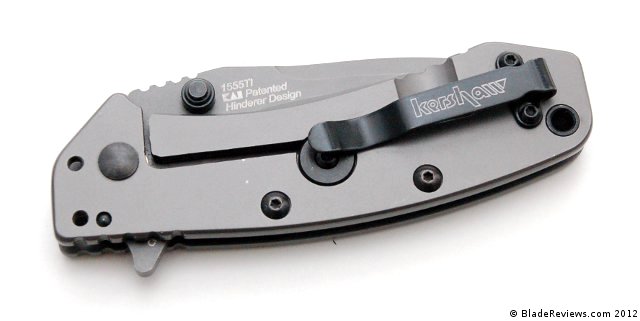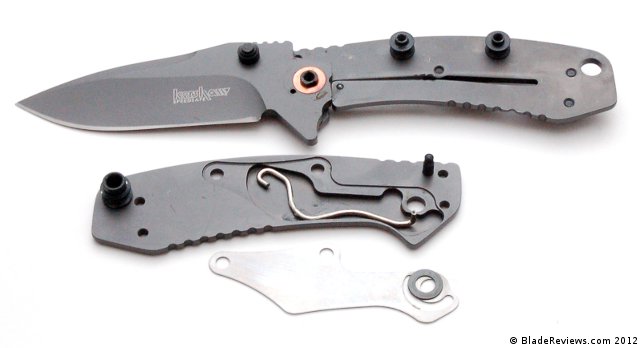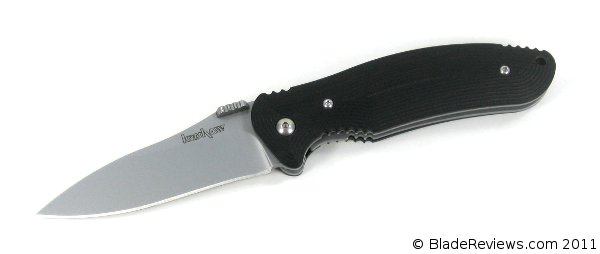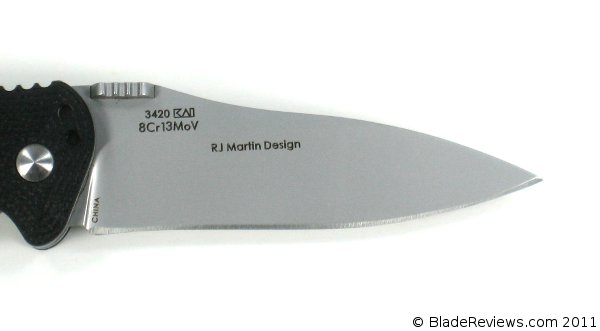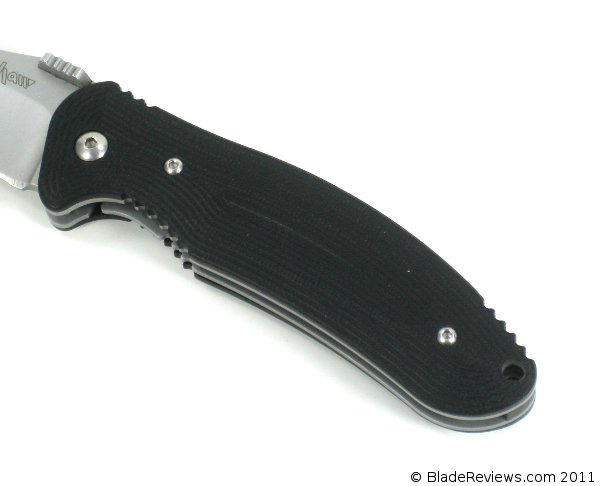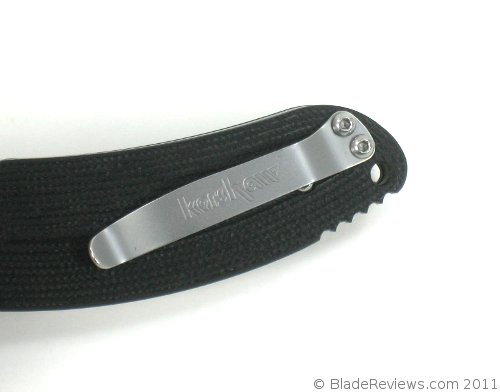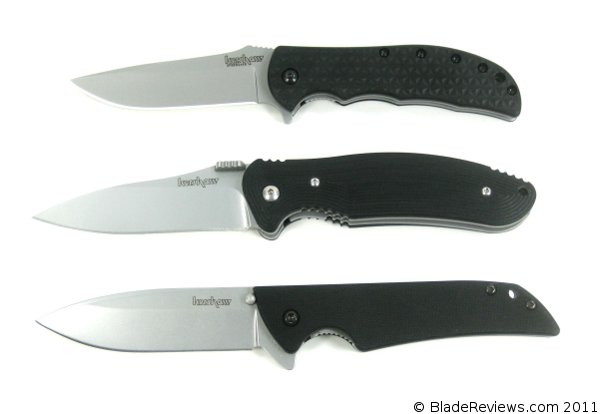Last Updated: August 11, 2019
Occasionally a knife comes along that I feel almost obligated to review. Almost as if I would be doing the site a disservice by not reviewing the knife. My goal with the website from day one was to build a resource, and a resource on folding knives would be pretty crummy if I didn’t have reviews of things like the Benchmade Griptilian or Kershaw Skyline. These kinds of knives have become so ubiquitous to our understanding of what a modern folding knife is, to the point where I feel that it would be a failure on my part not to include a review on them.
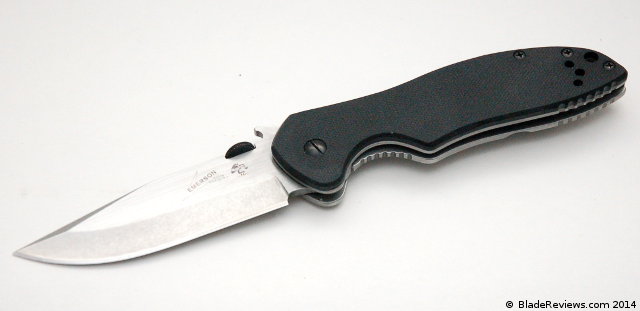
Buy the Kershaw CQC-6k at BladeHQ
I think that the CQC-6K could be another one of those knives. The CQC-6K is one knife in a series of collaborations between Emerson knives and Kershaw. That alone is reason enough to review it. Ernest Emerson is known for his quirky designs and relatively expensive knives. Between chisel grinding the edge, drilling and tapping the pocket clip for right side tip up carry only, and retailing the blades for (usually) over $180, his work is inaccessible to lots of people. These Kershaw collaborations can be had for under $40, and feature creature comforts like ambidextrous clips and v-ground edges. These knives could be perfect for someone who doesn’t want a cask strength Emerson.
I decided to pick out the CQC-6K specifically because it seemed like their flagship model. If you want to see an overview of the entire collaboration I invite you to check out the awesome work The Edge Observer did on the series. He really did a fantastic job and it gives you a good feel for the entire lineup. I am entirely too cheap and too lazy to purchase and review the entire collection.
General Dimensions and Blade Details
The CQC-6K has an overall length of 7.75″, a 3.25″ blade, and weighs 5.1 ounces. Kershaw has produced a number of smaller designs in the Kershaw/Emerson lineup, but I feel like this is a good size for my needs. 3.25″ is a good size blade for EDC, it fits the hand well, and just feels right.
I will say that at over 5 ounces, my biggest complaint is the weight. I don’t mean to sound like NutnFancy, but I think it is a valid criticism of the knife. Part of me wants to justify the heavy build because of the stainless steel frame lock, but with knives like the ESEE Zancudo being stainless steel framelocks coming in a full 2 ounces lighter than this 6K, I can’t help but wonder if things could have been done differently to save some weight. The flip side is that this knife appears to be very tough.
The CQC-6K comes with a classic clip point blade. Fans of a tanto blade may prefer the CQC-7K, which is basically the same knife with a tanto. You don’t need to be a history major to realize that the clip point is a very functional blade shape that has stood the test of time. I really enjoyed my CQC-13, which is an even more aggressive clip point. Here you get a capable tip, a good belly, and plenty of edge, all mated to a hollow grind. I like this blade shape a great deal.
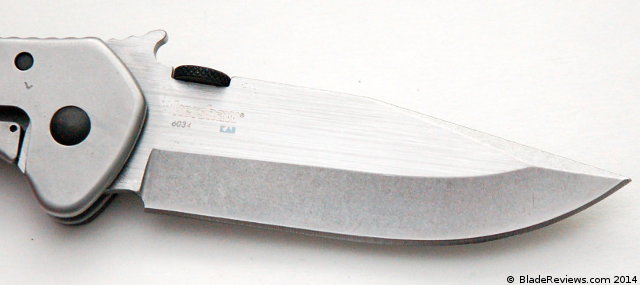
Emerson’s blades are one of my favorite aspects of his knives. The grinds are beautiful and I love the 2-toned finishes found on his stonewashed models. Here Kershaw attempted a 2 tone effect: satin flats and a stonewashed primary bevel. It’s not nearly as nice as a real Emerson, but I give them props for trying something different. I like this touch.
For steel Kershaw went with 8Cr13MoV. I don’t mind 8Cr13MoV on a $30 knife. As I have mentioned dozens of times before, it sharpens easily and it takes a good edge. Sure it won’t hold onto that edge forever, but that’s part of the game. My blade has held up well under normal use. Can’t say I did anything too crazy with the knife, but it broke down boxes, carved wood, and opened up plastic packaging on several occasions. If the intended use is EDC, the CQC-6K should do just fine.
Handle, Ergonomics, and Pocket Clip
The CQC-6K has a G-10 handle scale and stainless steel liner on the non-locking side, and a stainless steel framelock on the locking side. There is a partial G-10 backspacer. Construction is solid. The framelock and liner are both substantial, and is where this hefty knife picks up several of its extra ounces. I like how Kershaw went with Phillips head hardware for the body screws, and a slotted pivot, paying homage to Emerson’s original creations. The fit and finish of the handle is also quite good. The corners of the framelock were all chamfered, and the pieces line up well. One thing I did notice is that this framelock will rust if you aren’t careful. I am not sure what I was doing with my knife (maybe I used it prepare food or carried it around in a sweaty pocket), but one day I picked it up and noticed little rust spots on it. Bar Keeper’s Friend saved the day yet again, but it’s an observation I wanted to mention.
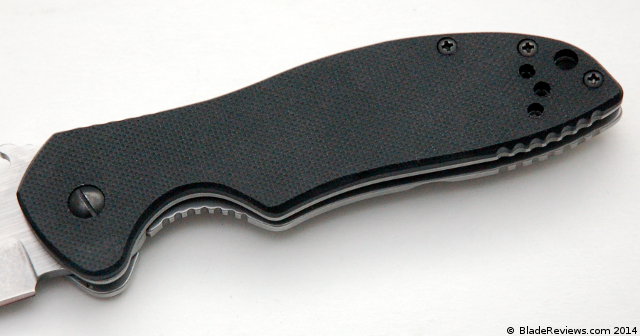
Ergonomically, the CQC-6K feels like an Emerson. That’s a great thing. This is a ridiculously comfortable knife. The handle is thick and spacious, and you have a deep finger groove that locks your hand in place. There is a prodigious amount of jimping on the knife, a feature I have shied away from, but it’s subdued and works well here. There is plenty of space to grab this in forward and reverse grips. This is just a good handle design.
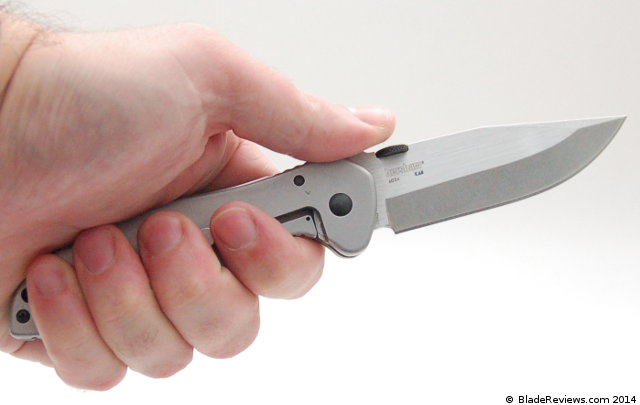
The pocket clip on the CQC-6K is modeled after the standard Emerson clip. It has been scaled down to fit the proportions of this smaller knife, but it’s the same shape of the clip regular Emersons come with. The clip is a proven design and was well implemented here, especially since Kershaw decided to drill and tap this thing for ambidextrous tip up carry. It’s a Christmas miracle – an Emerson with holes on both sides of the handle! (In case you couldn’t tell, I am very happy to see this.)
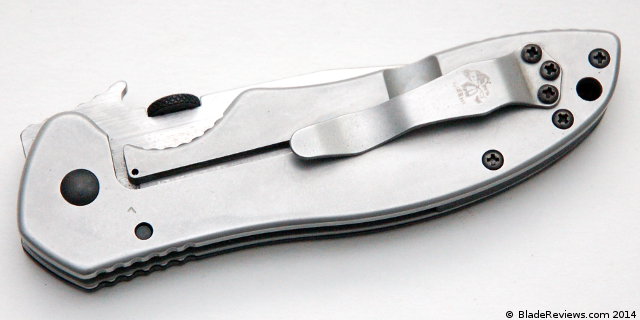
As far as carry goes, this is not a deep carry knife. There is room to easily grab the knife and make use of the wave feature. This is a heavy and relatively thick knife, but it carries well thanks in part to the sturdy clip design. The clip has also been laser etched with Emerson’s skull logo, an interesting detail that I could probably live without.
Deployment and Lockup
For deployment, you have the option of either using the wave feature, or the thumb disk. For the uninitiated, the wave feature is essentially a hook on the spine of the blade that catches on the corner of your pocket when drawing out the knife. As the hook catches on your pocket it forces the blade open. The wave feature is a lot of fun and it works well on this smaller knife. The thumb disk also works well and I actually find it a little easier to use on this compact design than on Emerson’s full size offerings.
As I mentioned earlier, this knife makes use of a stainless steel framelock. This is a departure from Emerson’s liner locks. It adds a lot of unnecessary weight to the knife, but most people seem to prefer frame locks for the perceived increase in strength, so I can see why they did it. I am happy to report that this is a good stainless steel frame lock. My knife locks up around 50%. The blade is secure, and is without any sort of play. Also the lock doesn’t stick, and is easy to manipulate. At this price point I can’t ask for much more than that.
Kershaw CQC-6K Review – Final Thoughts
By and large this knife is a winner. Kershaw has successfully brought Emerson’s designs to the mass market. Most of the stuff that makes an Emerson an Emerson has been ported over, and you also get things like a “V” edge, and ambidextrous pocket clip. Fit and finish is very good and the end result is a well made, satisfying knife, with classic Emerson attitude and ergonomics. I am thankful for the fact that they didn’t make this a Speedsafe knife. Kershaw loves to do that on budget blades (because their market research has shown most people prefer assisted openers), and I’m glade this one was spared. This price is also hard to beat. KAI has been on fire with their collaborations with Hinderer, and these new collaborations with Ernest Emerson may just make KAI the collaboration king.
If I were to lodge a complaint against the CQC-6K it would be the weight. Some might try to cut the 6K some slack because it’s a $30 knife, but the Zancudo is similarly priced but is much lighter. For that reason this one doesn’t quite make my best EDC knives list, but it comes pretty close. This is an otherwise great knife so I feel the need to point out this potential issue. The flip side is that it makes for a very tough knife, and this could be a good choice for a beater / work blade. Emerson purists may bemoan the fact that this knife is made overseas. If that is such a big issue I would suggest saving up and buying a real Emerson.
At the end of the day I think you are getting a lot of nice knife for the money, and I recommend it for fans of Emerson’s designs or those looking for a tough and compact EDC that won’t break the bank.
- 3” blade is made of 8Cr14MoV stainless steel with dual blade finishes offers excellent edge retention and wear resistance
- Modified clip-point blade is ideal for delicate handiwork, opening packages, cleaning small game, aggressive animal defense and preparing kindling
- Designed by Emerson Knives and precision engineered by Kershaw for uncompromising function, fit and finish
- Versatile pocket carry and ideal companion for wilderness guides, hunters, backpackers, landscapers and knife enthusiasts
- Manual blade opening with a thumb disk, Emerson’s patented “wave shaped feature”, a favorite feature among military, rescue and law enforcement
I recommend purchasing the CQC-6K at Amazon or BladeHQ. Thanks for reading!
